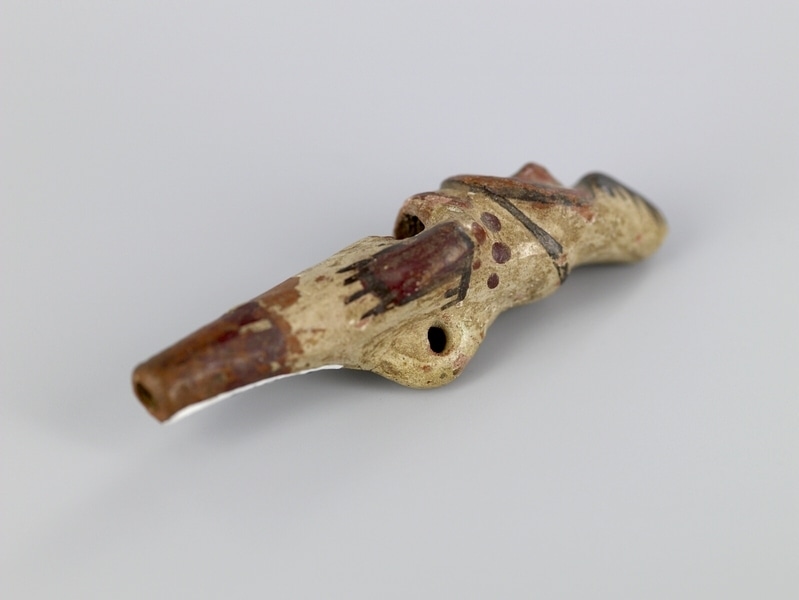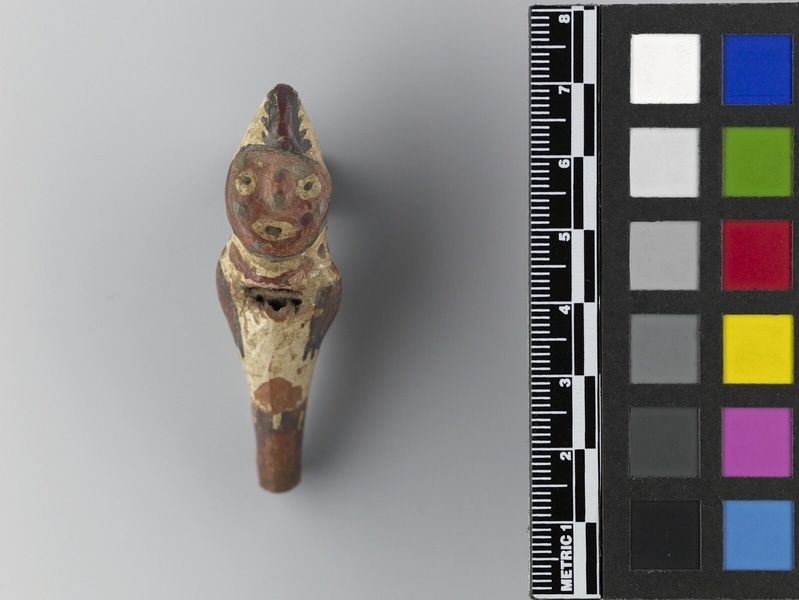Whistle Item Number: Sf616 from the MOA: University of British Columbia


Description
A small ceramic whistle modeled in human form. Facial features and costume details are painted in white, dark red and black. Headdress or hat has a central vertical stripe and oblique hatching lines. Clay loop on back. Whistling chamber opens in foot area with another larger opening in 'chest' area.
History Of Use
Small whistles like this are often found in pairs and sound 1/4 note apart (Sawyer). The peaked cap figure appears in painted and modelled ceramics and on painted and embroidered textiles. He does not seem to be a major deity as he is often represented as small in size or in repetition.
Narrative
Nasca style, Early Intermediate Period, 0-100 C.E.
Iconographic Meaning
According to Alan Sawyer, the figure in the peaked cap is associated with fertility themes as he is frequently seen brandishing or bearing agricultural crop plants of various types. A ceramic representation of the same figure shows him with darts in one hand "...an oblique reference to the importance of warfare and trophy-head collection to crop fertility" (Sawyer 1979).
Item History
What
- Name
- Whistle
- Identification Number
- Sf616
- Type of Item
- whistle
- Material
- glaze and clay
- Manufacturing Technique
- modelled, slip painted, polished, oxidation fired and fired
- Overall
- height 5.7 cm, width 1.7 cm, depth 1.6 cm
Where
- Holding Institution
- MOA: University of British Columbia
- Made in
- Peru
When
- Creation Date
- between 1 and 100
- Collection Date
- between 1949 and 1966
- Ownership Date
- before May 4, 1981
- Acquisition Date
- on May 4, 1981
Other
- Item Classes
- ceramics
- Condition
- fair
- Accession Number
- 0711/0118